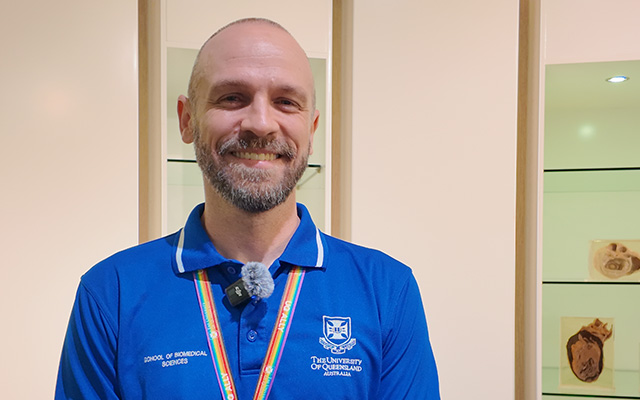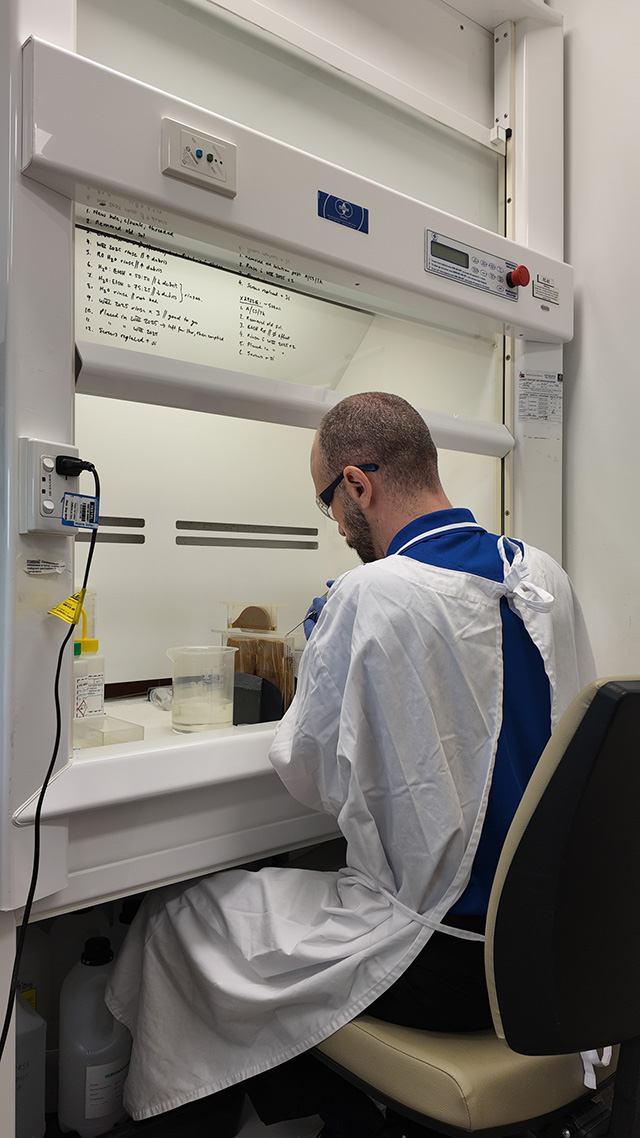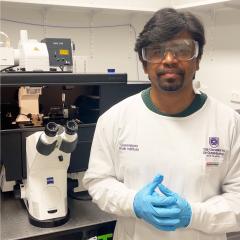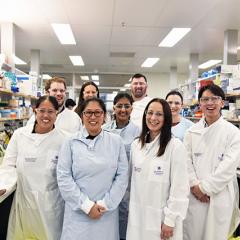To celebrate International Museum Day on 18 May 2025, we are taking you on a behind-the-scenes look at the conservation work happening in the Integrated Pathology Learning Centre (IPLC).
The IPLC is a unique collection of more than 5,000 human pathology specimens for the education of UQ students, supported by the School of Biomedical Sciences in the Faculty of Health, Medicine and Behavioural Sciences.
Our Senior Assistant Curator and Conservator, Paul Muffatti, is here to answer some of our most frequently asked questions.

What is your background?
I began my career at the IPLC as a part-time Museum Assistant in November 2023, before successfully applying for a full-time Conservator role at the facility in June 2024. With a BSc in Human Movement Science under my belt and over a decade of experience as a laboratory technician at UQ St Lucia’s Gross Anatomy Facility, I was able to laterally transfer much of the knowledge, skills, and experience that I had gained at the St Lucia campus to my new role at the IPLC.
What is the main aim of your work?
The fundamental purpose of my role is to optimally preserve the IPLC’s 5,000+ pathology specimens using best practice conservation techniques. As our pathology collection is historical in nature – and is therefore irreplaceable – much of the work I do focuses on effectively preserving the specimens for their continued use in teaching today and well in the future.
How do you know when a specimen needs maintenance?
The vast majority of our pathology specimens are carefully mounted in Perspex containers that we call ‘pots’. Each pot is filled with a preservative solution consisting of distilled water, glycerol, buffering salts and formalin. This mixture is designed for the long-term preservation of the tissues that make up our pathology specimens.
When deciding if a pathology specimen needs maintenance in our laboratory space, I initially assess the state of the pot according to:
- The pathology specimen (e.g. Is it intact or is it deteriorating? Is it securely attached to its mounting plate? Has its colour faded over time?);
- The Perspex pot (e.g. Can the specimen be seen clearly through the Perspex? Are there any cracks or chips in the Perspex? Is the specimen’s preservative solution leaking?); and
- The preservative solution (e.g. Is it staining over time? Is it going cloudy? Is the pH too high or low?).
What kind of conservation work happens with the specimens?
Following an initial assessment, I act to remedy any problematic findings. Examples might include:
- Remounting a specimen that has detached from its mounting plate; or
- Resealing a leaking Perspex pot to ensure it retains its preservative solution; or
- Replacing a pot’s preservative solution if it has become too discoloured or opaque to clearly view the specimen through.
Many of the techniques I employ to maintain our pathology collection require high visual acuity, painstaking attention to detail, deft fine motor skills, and infinite amounts of patience. While operations in the maintenance lab run reasonably smoothly most of the time, I occasionally come across a specimen that refuses to cooperate. Despite the challenges and frustrations of specimen maintenance, I am always able to problem-solve my way through to a positive outcome.
What else is part of your role?
Preventive conservation techniques are also an important part of my role, as UV light exposure, excessive fluctuations in temperature and humidity, and the presence of pests (both macroscopic and microscopic) can have a detrimental effect on our collection in the long term. As such, it is important to proactively monitor and manage these problems so that the IPLC’s pathology collection can remain the valuable educational resource that it has become today.



